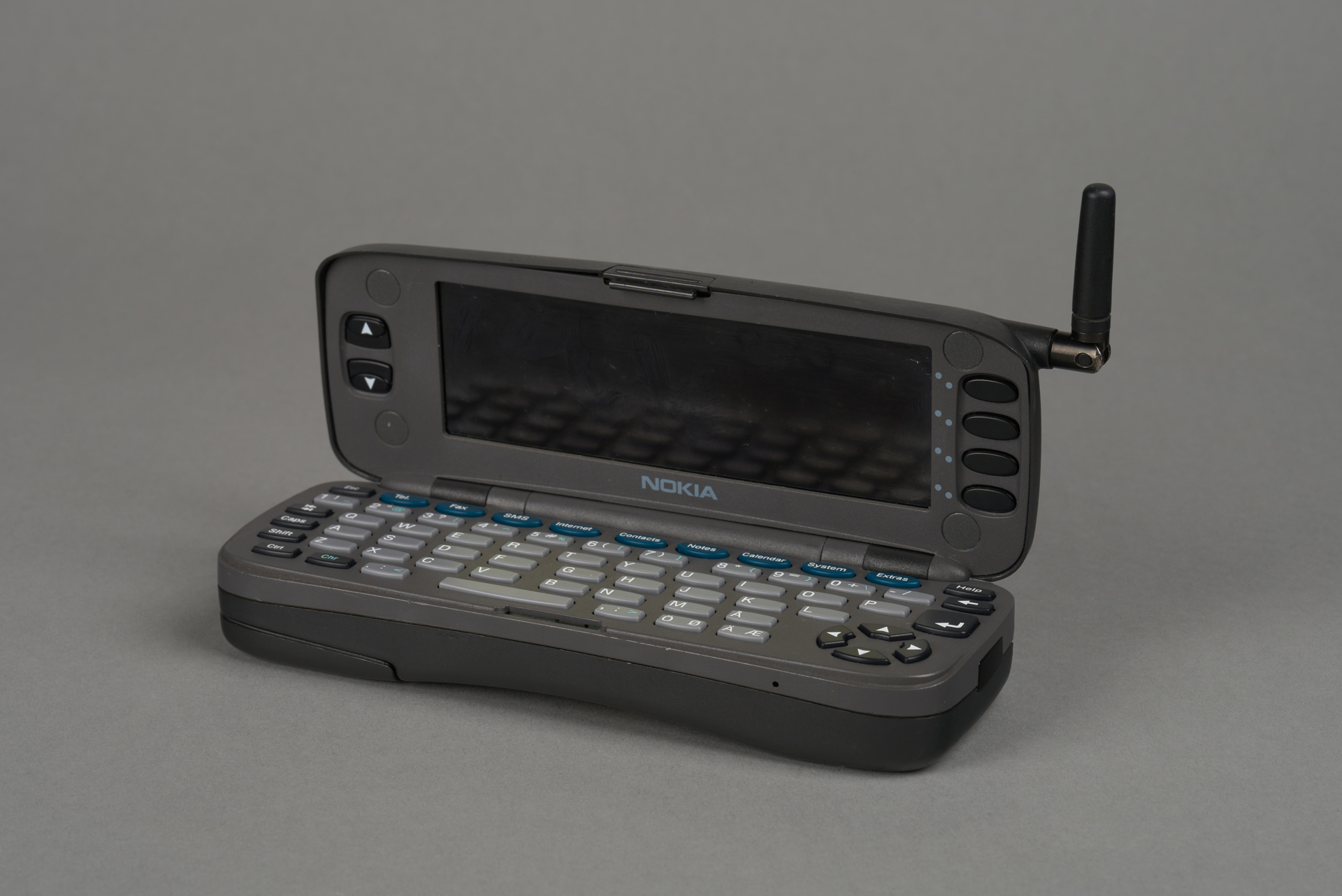
Creator
Nokia
Time and place of creation
Place:
Finland
This item is a cellular phone integrated in a single housing with a pocket computer, which was designed with business applications in mind. The purpose of the device was to perform simple office tasks, such as agenda management, document editing, viewing simple webpages, or handling faxes and emails. Although the word was not in use at the time of the Nokia 9000 launch, the device may be considered as one of the first ever smartphones on the market, making it one of the most significant designs in the history of information and communication technology.
At first glance the design resembled a standard mobile phone, albeit a large one even by the standards of the 1990s. When unfolded, however, it offered the user access to a monochrome display and a full QWERTY keyboard, which could be used to access the device’s advanced functions.
This telephone came into existence as a result of the development of second-generation cellular networks (GSM), which, apart from voice calls, also offered the function of digital data transfer. This possibility was usually implemented with the use of a portable (laptop) or pocket (palmtop) computer tethered to a cellular phone. The product of the Finnish Nokia company was an early attempt at combining the two functionalities in one device, creating a trend that was to become a standard in the first decade of the 21st century.
The Nokia 9000 was controlled by the Intel i386 CPU running at 24 MHz – a chip used in standard PC computers just a few years earlier. In that respect it differed from modern mobile devices, which usually use energy-efficient chips from the ARM family.
The device gave rise to an entire family of Communicator telephones, predominantly targeted at business users.
Creator
Nokia
Time and place of creation
Place:
Finland











